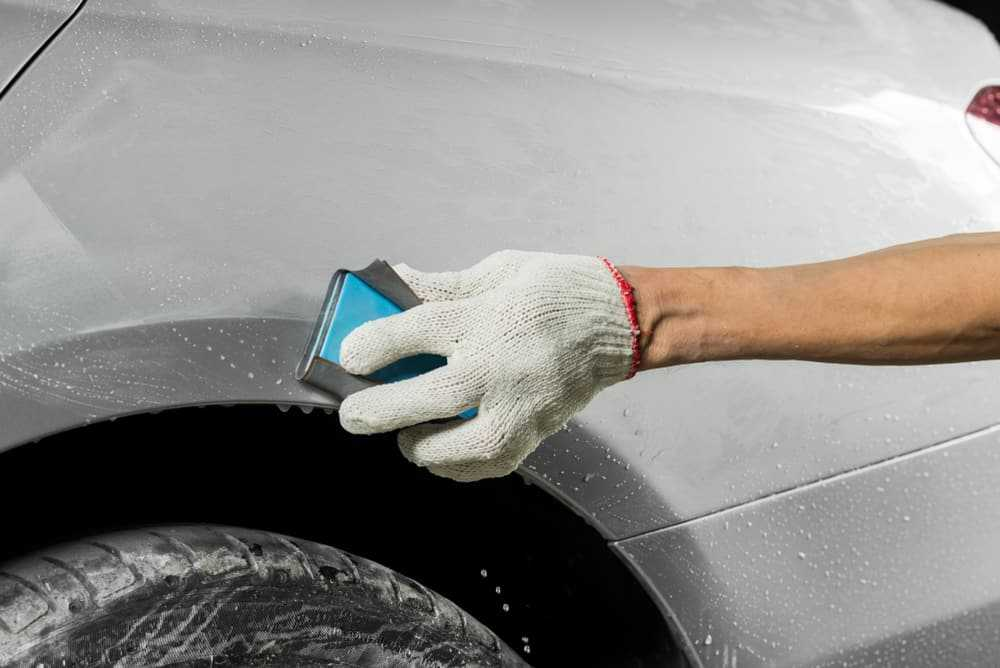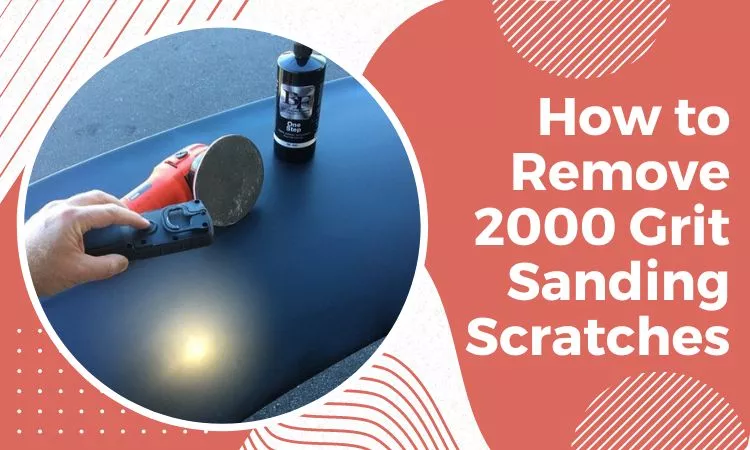Are you getting scratches on your car, despite taking all the necessary precautions? The situation is frustrating enough since it destroys the aesthetic beauty of your car.
So, how to remove 2000-grit sanding scratches?
You can remove 2000-grit sanding scratches through wet sanding. Prepare the surface by cleaning it thoroughly. Keep the area wet by spraying water or using a lubricant. Use fine-grit sandpaper (e.g., 2000 grit) and sand in circular motions. Rinse the surface to remove any residue and let it dry. Finally polish and wax the area.
It would be hard to do the work without the help of this short answer. So hang tight and go through the article to get a long detailed process,
How to Remove 2000 Grit Sanding Scratches: The Best Method
Even at a finer grit like 2000, scratches can still be seen on some surfaces. Especially on glossy or reflective ones. When scratches are removed, the surface appears smoother and more uniform, improving its aesthetic appeal.
Removing 2000-grit sanding scratches seems quite hard work. Actually, it’s not that difficult to remove it.
Method: Wet Sanding And Rubbing Compound
To remove scratches caused by 2000-grit sanding, wet sanding is commonly used. Water or a lubricant is used to wet the surface while sanding it with fine-grain sandpaper. Follow the steps below to do the job perfectly.
Required Materials:
Before starting the procedure, let’s get to know the materials first which are required for the task.
- Sandpaper
- Automotive soap
- Polishing pad
- Microfiber towel
- Car wax
- And water
Step 1: Wash The Car
So, here’s how you should wash your car before the wet sanding process.
- Ensure that debris and residue are removed from the work area on the car.
- After cleaning the surface with automotive soap and a sponge, rinse thoroughly with a hose. This is also a necessary step when you want to refurbish your Mazda paint chip.
Tip: It is important to avoid using an automotive soap that also functions as a polish or wax. There is no need to wait for the area to dry before proceeding.
Step 2: Wrap The Sandpaper Around A Sanding Squeegee or Pad
Once washing the car is done now it’s time to engage in the wet sanding process.
Tip: Avoid using your hands alone. An uneven sanding surface can result from the natural gaps between your fingers.
- Use a sandpaper squeegee, handle, or pad to wrap the sandpaper around.
- If you are wet sanding a particular area, choose between flat or curved handles, as well as bendable handles.
- To ensure that the sandpaper is properly secured, read the instructions included with the tool you choose to purchase. Hardware stores and auto parts stores usually carry sanding tools.

Step 3: Sand Gently in Circular Motions
- Apply light pressure and gentle circular motions to the area after the sandpaper has been adequately soaked.
- To achieve the desired effect, gradually increase the pressure of the sanding.
Tip: But try to consider if it impacts the clear coat. Immediately reduce the pressure, if the sandpaper seems to be damaging the paint or penetrating beyond the clear coat.
Step 4: Move The Sandpaper in Multiple Directions to Ensure An Even Sanding
- Periodically alter the direction of your circular motions or approach the area from different angles to ensure even sanding. Unevenness may not be easily detectable during the process but may become obvious afterward.
- When changing angles or directions, exercise caution and avoid applying excessive pressure. When you are sanding, observe the water around the area for a slight tint.
Tip: If the water becomes noticeably darker while you sand, you are applying too much pressure. The force must be reduced in such cases to avoid damage.
Step 5: Add The Necessary Water
- Ensure that the sandpaper remains consistently wet during wet sanding.
- Soak the sandpaper regularly in soapy water and even pour some directly onto the vehicle to keep it saturated. Wet sanding with soap will give an improved result than just plain water.
- For optimal performance, replace worn or excessively soaked sandpaper with fresh, soaked sheets.
Tip: It is crucial to keep the sandpaper moist to avoid generating heat which can cause paint burns. The affected component of the body may have to be repainted if the paint is damaged.
Step 6: Clean the area
Now the wet sanding process is completed. In this step,
- Employ a hose to thoroughly rinse off any remaining soap or debris from the vehicle.
- You can wipe out the remaining water and debris with a microfiber towel.
- Then, let it dry.
Tip: A thorough rinse is essential since the dried area will later be painted or waxed.
Step 7: Buff And Polish The scratched area
Once the wet-sanded area has thoroughly dried,
- Take a buffer pad and apply some rubbing compound onto it. I get my buffer pad here.
- Buff the affected area using an orbital polisher equipped with a wool pad.
- Hold the polisher for 10-20 seconds over the scratches.

Tip: As the orbital polisher spins across the car’s surface, the rubbing compound is effectively applied to the scratches. Rubbing compound is also helpful for fixing cloudy paint from car magnets.
- When buffing the rubbing compound into the paint, maintain a light amount of pressure. Rotate the buffer in circular motions as it spins.
- In order to avoid burning the paint, excessive pressure must be avoided. Rub the compound gently and gradually increase pressure as needed.
Step 7: Wax to The Finished Area
Once the area has been buffed, it should look like the final product.
- Apply high-quality automotive wax to the surface to provide extra protection. Sanding wet may slightly affect the depth of that specific area, so wax prevents uneven fading.
- Wash and wax the entire vehicle after wet sanding to remove any dust or debris. It not only protects the paint but also enhances its shine.
What Is The Best Compound to Remove 2000-Grit?
The 3M Paste Rubbing Compound is the best to remove 2000 grit. Also, it can remove scratches of 1200 and 1500-grit.

Fine sanding scratches of 1200, 1500, and 2000-grit can be removed from automotive paint types, including clear coats. Glossier finishes and deeper colors are particularly enhanced by this technique.
Pro Tips
Here are some tips to finish your work smoothly:
Frequently Asked Questions (FAQs)
What Is 7000-Grit Sandpaper Used for?
7000 grit sandpaper is used for metal polishing. A 7000 grit is considered ultra-fine, which makes it well-suited metal polishing. Also, it’s suitable for automotive paint surface polishing, and car headlight restoration.
Do Scratches Leave Permanent Marks?
The potential for permanent marks from scratches depends on their depth and the healing ability of the affected surface. However, some scratches do not leave permanent marks, depending on the type, healing capacity, and treatment.
Does Wet Sanding Remove Deep Scratches?
In most cases, this is the preferred method for removing deep scratches. It is effective in removing deep scratches, but you must proceed with caution. For best results, you should start with a higher grit than you expect, just to prevent removing the paint
Conclusion
Hopefully, you’ve got to know how to remove 2000-grit sanding scratches.
Following the steps given above, you can completely get rid of the scratches. By addressing these scratches, you enhance the aesthetics of the surface. It also improves surface preparation for further treatments and creates a uniform light reflection.
As an Amazon Associate I earn from qualifying purchases.


